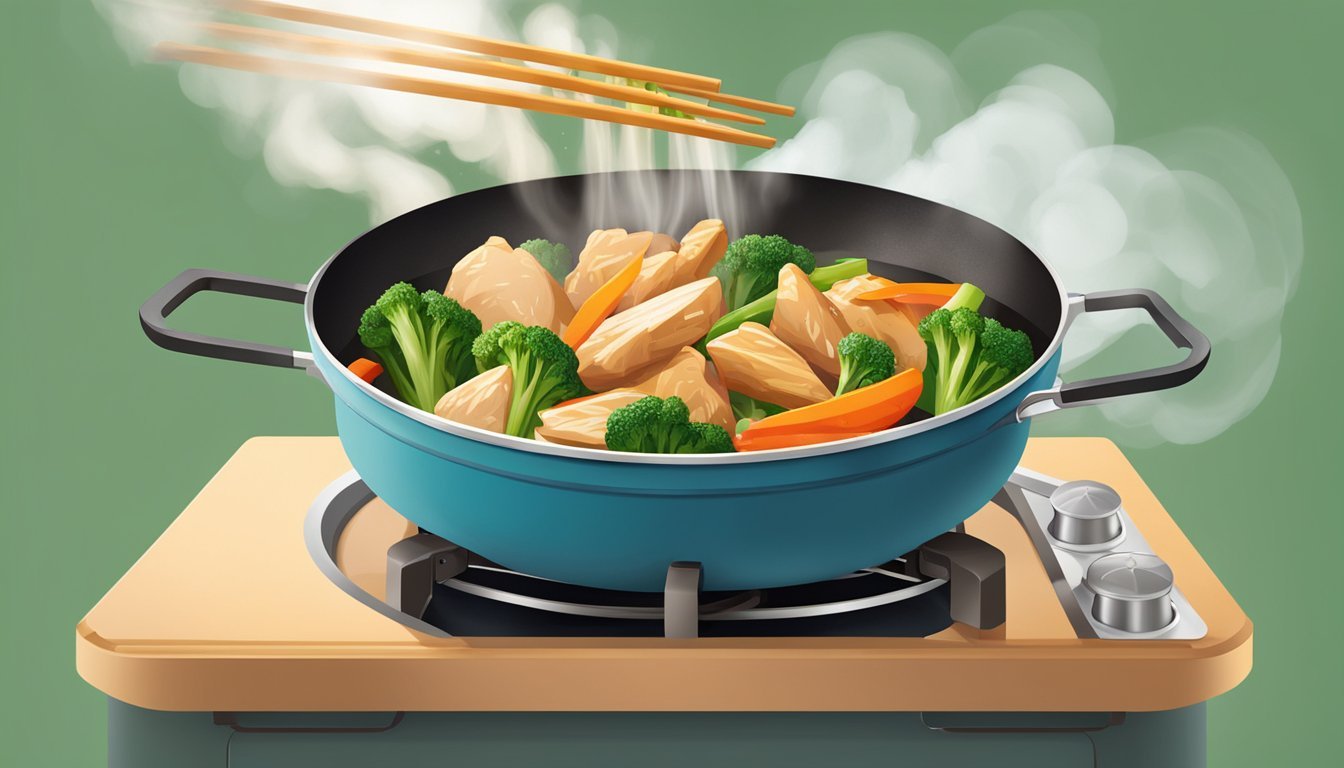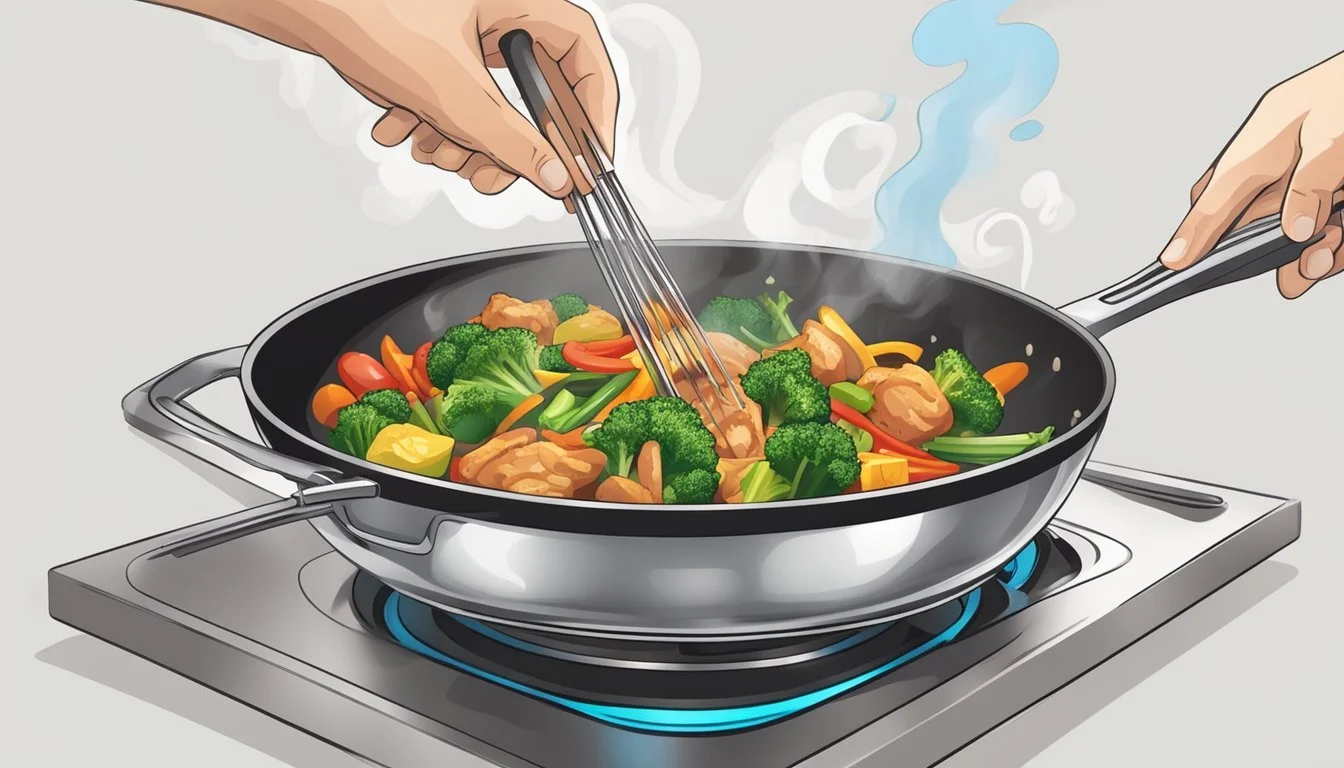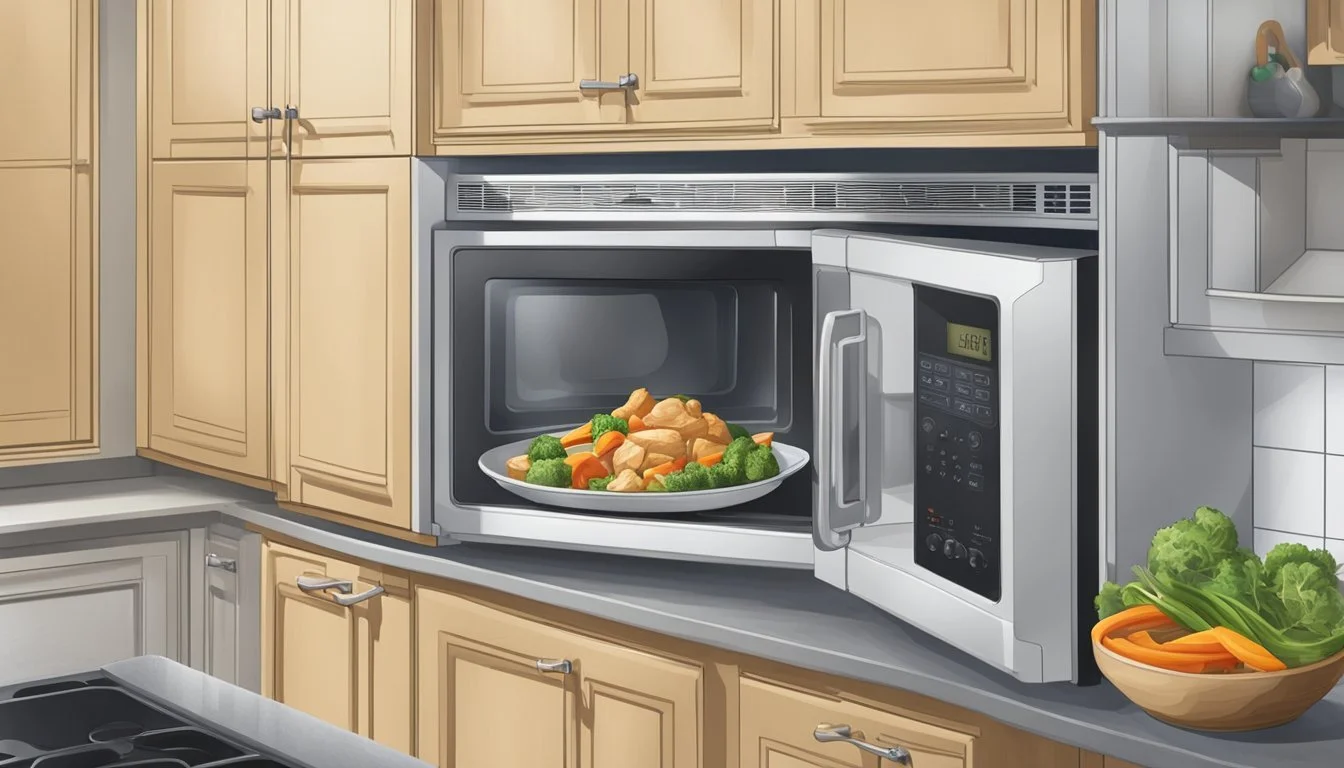Best Way to Reheat Chicken Stir-Fry
Ensuring Crisp Veggies and Tender Meat
Reheating a chicken stir-fry while maintaining the quality and texture of the dish can be a delicate task. The key lies in choosing a method that ensures that the vegetables stay crisp and the chicken remains tender. Different techniques can be employed to achieve this, with some offering a quicker solution, while others might take a little more time but can contribute to a better flavor preservation.
When it comes to retaining the integrity of the leftover stir-fry, it is important to consider the components of the dish. Vegetables, if overcooked during reheating, can lose their vibrant color and crispness, while chicken can become dry and tough if reheated incorrectly. Therefore, the method chosen should allow for the stir-fry to quickly regain heat without changing the texture of the vegetables and while keeping the chicken moist and flavorful.
Achieving the best results requires an understanding of both the properties of the ingredients used in a stir-fry and the ways that heat can affect them. One must be cautious not to introduce too much additional moisture, which can cause sogginess, or apply too high of heat, which can lead to drying out the dish. By selectively applying heat and using techniques that distribute it evenly, one can ensure that the reheated stir fry closely resembles the freshly made version in both taste and presentation.
Understanding Reheating Basics
When reheating chicken stir-fry, it's crucial to manage the temperature carefully and ensure the retention of moisture to preserve the tenderness of the chicken and the crispness of the vegetables.
Effects of Temperature on Protein
Temperature plays a vital role when reheating proteins such as chicken. It needs to be warmed to a safe internal temperature of 165°F to ensure food safety. However, applying too much heat can cause the chicken to dry out and toughen. Utilizing gentle heating methods, such as reheating in a skillet over medium heat or in the oven on a low setting, supports even warming while preserving the chicken's tenderness.
Skillet (Recommended): Reheat over medium heat for a few minutes until warmed through.
Oven: Preheat to 275°F (135°C) and warm the chicken for 10-15 minutes.
Microwave: Short intervals on medium power help prevent overcooking.
The Role of Moisture Retention
Moisture retention is critical to maintaining the quality of the stir-fry. When the dish becomes dry, the chicken can lose its tenderness, and vegetables can become limp. Incorporating a small amount of liquid such as broth or water can replenish the moisture content. For microwave reheating, covering the dish with a paper towel can also help maintain moisture.
Adding Liquids: A splash of broth or water while reheating in a skillet or oven helps to keep the stir-fry moist.
Covering: In a microwave, cover the dish with a paper towel to trap steam and distribute heat evenly.
Pre-Reheating Considerations
Before reheating chicken stir-fry, it's crucial to consider how to handle leftovers and select an appropriate reheating method that maintains the vegetables' crispness and keeps the chicken tender.
Restoring Leftovers to Room Temperature
Bringing leftover stir-fry to room temperature is a step not to be missed. This can generally take about 15-30 minutes depending on the quantity. The process ensures a more uniform heat distribution during reheating, which is particularly important when dealing with delicate proteins and vegetables.
Choosing the Right Reheating Method
The method chosen for reheating plays a pivotal role in the outcome of your chicken stir-fry. Here are the primary methods:
Microwave: While convenient, it is typically not the best option for stir-fry as it can cause the vegetables to become soggy and overcook the proteins. If using, cover the dish with a paper towel to trap steam and heat on medium power in 30-second intervals, checking for an internal temperature of 165°F.
Stovetop: Add a small amount of oil to a pan and reheat over medium-high heat, stirring occasionally, until the dish reaches the appropriate internal temperature. This method helps maintain the textures of your stir-fry components.
Oven: Preheat the oven to 350°F and spread the stir-fry evenly on a baking sheet, possibly lined with foil for easy cleanup. Heat for 5-10 minutes, checking regularly to avoid overcooking.
Air Fryer: This method is less common, but for those seeking crisp vegetables, quickly reheating at a high temperature for a few minutes in an air fryer can achieve that effect without making the chicken tough.
Each of these methods can effectively reheat chicken stir-fry, but the stovetop approach typically offers the best balance between ease and quality results.
Reheating Techniques
Choosing the right reheating technique for chicken stir-fry is crucial in maintaining crisp vegetables and tender chicken. Each method has its advantages and contributes to the texture and moisture of the dish.
Using the Microwave Effectively
A microwave can quickly reheat stir-fry, but caution is needed to prevent sogginess. One should place the stir-fry in a microwave-safe dish, cover it loosely with a paper towel to allow steam to escape, and use a medium power setting. Reheating in short intervals of 90 seconds and stirring in between each interval ensures even heating without overcooking.
Oven Reheating for Even Heat Distribution
For even heat distribution, reheating in an oven is a viable option. Arrange the stir-fry on an oven-safe dish, cover with aluminum foil to retain moisture, and place it in a preheated oven at 350°F (175°C). Heat for 10-15 minutes, checking occasionally to ensure the vegetables remain crisp.
Stovetop Reheating for Crisp Vegetables
Stovetop reheating can help the vegetables stay crisp and revitalize the flavors of the dish. It's best to use a skillet or wok with a small amount of oil heated over medium-high heat. Stir the stir-fry frequently for around 5 minutes until everything is warmed through.
Specialty Methods: Air Fryer and Wok
For those who have an air fryer, it offers an innovative way to reheat stir-fry while keeping vegetables crisp. Heat the air fryer to 350°F and reheat in small batches for 3-4 minutes. Alternatively, using a traditional wok allows for quick reheating at high temperatures, which is great for retaining the crispness of vegetables and keeping the chicken moist.
Adjusting the Cooking Environment
Properly reheating chicken stir-fry to achieve the ideal balance of crisp vegetables and tender chicken hinges on an attentive adjustment of the cooking environment. Key factors include managing heat levels, avoiding overcrowding in the pan, and the judicious use of oils or cooking sprays.
Managing Heat Levels
One must calibrate the heat levels with precision. A medium-high temperature is recommended for reheating chicken stir-fry on the stovetop. This ensures that the heat is sufficient to warm the dish thoroughly without overcooking the vegetables and drying out the chicken. The skillet should be preheated before adding the stir-fry to promote even cooking.
Avoiding Overcrowding the Pan
To maintain texture, it is crucial to avoid overfilling the skillet. Overcrowding leads to steaming rather than sautéing, causing the vegetables to lose their sought-after crispness. It is beneficial to reheat in batches if necessary to ensure that each piece of chicken and vegetable has enough space to reheat efficiently.
Using Cooking Sprays and Oils
A light coating of cooking spray or a small amount of vegetable oil in the pan can prevent sticking and help retain the moisture of the chicken. The oil should be just enough to coat the bottom of the pan, as too much can cause the stir-fry to become greasy. The use of oil also contributes to the regeneration of a slightly crispy texture on the vegetables and chicken, reminiscent of when the stir-fry was first prepared.
Adding Flavor and Maintaining Texture
Reheating chicken stir-fry requires a balance of techniques to preserve the vibrant flavors and textures. The goal is to keep the vegetables crisp, and the chicken tender, while enhancing the dish's overall flavor profile with seasoned sauces and oils.
Incorporating Sauces and Seasonings
To maintain robust flavors when reheating, one should consider adding a small amount of sauce or seasonings.
Sauces: A splash of soy sauce or broth can reintroduce moisture and richness.
Amount: Just a teaspoon or two is sufficient to avoid sogginess.
Seasonings: A pinch of fresh spices or herbs can help revive the flavor of the chicken stir-fry.
Timing: Add these towards the end of reheating to preserve their potency.
Selecting and adding seasonings carefully ensures the stir-fry retains the complexity of its flavors without becoming overpowering or losing its original essence.
Preserving the Crispness of Vegetables
Key to a pleasing texture in reheated stir-fry is to maintain the crispness of vegetables.
Method: Reheat on a medium-high heat using a non-stick pan.
Oil: Add a small drizzle of oil to prevent sticking and to help vegetables regain a crispy edge.
Type of Oil: A high smoke-point oil, such as canola or peanut, is preferred.
This method helps in achieving a slightly seared and crisp texture reminiscent of the initial cooking.
Ensuring Chicken Tenderness
Achieving tender chicken in a reheated stir-fry is crucial and can be managed with measured heat and timing.
Heat: Medium heat allows the chicken to warm through without becoming rubbery.
Covering: Using a lid can trap steam and keep the chicken moist.
Monitoring: Constant attention prevents overcooking, which is detrimental to tenderness.
Checking: Test for doneness to ensure the chicken is just heated through and not overdone.
Respect for the ingredients and careful monitoring as one reheats will result in chicken that remains succulent and tender.
Safety and Storage Best Practices
The key to enjoying leftover chicken stir-fry is ensuring that it has been stored safely and that food safety guidelines have been adhered to.
Proper Storage Techniques
When storing leftover stir-fry, one should cool it to room temperature within two hours of cooking to prevent bacterial growth. It is crucial to use airtight containers to maintain freshness and avoid contamination. Containers should be shallow to allow for quick cooling. Leftover stir-fry should be refrigerated promptly and kept at or below 40°F. Segregating leftover vegetables and chicken can also help preserve their respective textures.
Understanding Food Safety
Food safety is paramount when handling leftover stir-fry. The refrigerator should be set to the appropriate temperature to inhibit bacterial proliferation, typically at or below 40°F. Consuming leftover stir-fry within three to four days is recommended to reduce the risk of foodborne illnesses. When reheating, one must ensure that the stir-fry reaches an internal temperature of 165°F to eliminate potential bacteria. It is important to reheat only once, as multiple temperature changes can compromise both the safety and the quality of the food.
FAQs About Reheating Chicken Stir-Fry
In this section, readers will find specific answers to common questions related to reheating chicken stir-fry, with a focus on achieving the best flavor and safety.
Can You Reheat Chicken Stir-Fry the Next Day?
Yes, one can reheat chicken stir-fry the next day. For the best results, they should store the leftovers in an airtight container in the refrigerator to maintain its freshness. When reheating, using a pan over medium-high heat can help restore the tenderness of the chicken and preserve the crispness of the vegetables.
Is It Safe to Reheat Stir-Fry Multiple Times?
It is safe to reheat stir-fry multiple times as long as the internal temperature of the chicken reaches at least 165°F each time. However, it's important to note that repeated reheating can degrade the quality and texture of the stir-fry. It's recommended to only reheat the portion one intends to eat to avoid multiple reheating cycles.
Best Practices for Reheating Restaurant Stir-Fry
To reheat restaurant stir-fry and maintain its quality, one should:
Transfer to a pan: Gently warm the stir-fry in a pan over medium heat to ensure even reheating.
Add moisture: If the stir-fry seems dry, adding a small amount of water or broth can help.
Use medium power: If using a microwave, reheating at medium power for shorter intervals can prevent overcooking.
Avoid overloading: Place a reasonable portion in a microwave-safe dish to avoid uneven heating.
By adhering to these best practices, one can enjoy their leftover chicken stir-fry with confidence and satisfaction.
Final Thoughts
Reheating chicken stir-fry so that the vegetables remain crisp and the chicken stays tender is a delicate task. Achieving quality and flavor without compromising doneness requires careful attention to detail.
Microwave Method: For quick reheating, one should use medium power and keep the duration short, just enough for the chicken to reach doneness without drying out. A microwave-safe dish covered with a paper towel helps steam the stir-fry, preserving moisture in the chicken.
Oven Option: Preheat the oven and cover the stir-fry with foil to lock in moisture. This method is optimal for large quantities and helps maintain the integrity of the vegetables and chicken making it as flavorful as the original dish.
Stovetop Stirring: Reheating over the stove allows one to toss the ingredients gently, helping to rejuvenate the stir-fry's freshness. This process requires a watchful eye to prevent overcooking.
Air Fryer Advantage: For smaller portions, the air fryer offers a quick way to re-crisp the vegetables while keeping the chicken juicy. It is essential to not overcrowd the basket to allow even heating.
One's choice might vary based on the quantity of leftovers and the tools at hand, but the principles of gentle reheating and monitoring for doneness remain constant. A stir-fry is at its best when the flavors meld together harmoniously, so keep a close eye on the process to ensure a satisfying meal, regardless of the date on which it was originally prepared.




